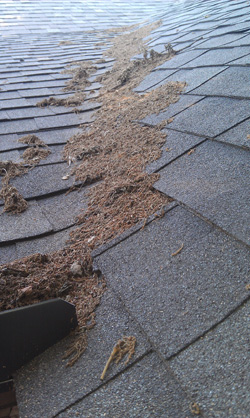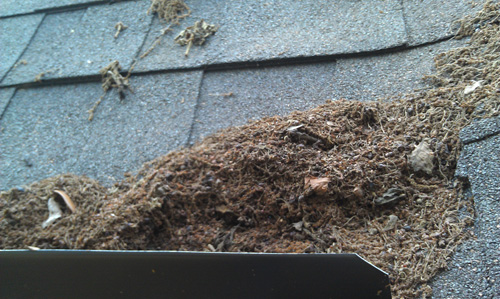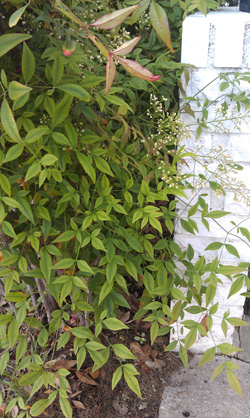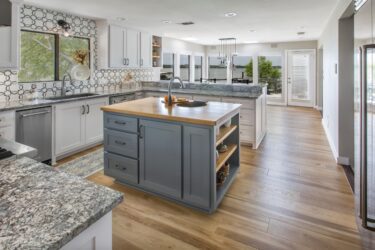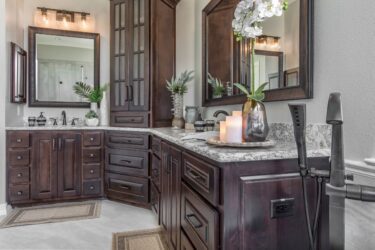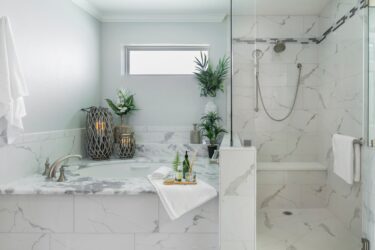Mother Nature is literally trying to eat your home. We live in an organic world, where everything will be consumed eventually. The good news? With a little forethought and routine maintenance, you can protect your home from premature consumption.
The main cause of the premature deterioration of your home is vegetation being allowed to come in close contact with the roof, walls and foundation. If vegetation is allowed to lie against these areas, it creates a shelter that holds moisture. Before you know it, a little ecosystem is created that begins to eat your home. The first residents to show up are bugs, then rodents find a nice home there, and then come the bigger rodents. These unwanted visitors have the potential to create a huge, expensive mess.
I’ve seen two homes this spring where raccoons had moved into the floor system between the upstairs and downstairs. In both cases, the ceiling had to be removed; microbiological agents had to be used to clean the framing, the HVAC ducts and a good portion of the wiring had to be replaced, and the whole thing put back together. In both
cases, the problem didn’t happen overnight. The neglect, over a several-year period, of the minor areas where vegetation collected created a really healthy ecosystem that began to consume its environment. With a little attention to maintenance, you can keep this from happening to your home.
Here are some tips to help you avoid premature consumption of your home.
Roof
Debris Dams: These cause so much unnecessary damage. The debris lies there, collects some dirt and dust, begins to decompose, and becomes too heavy for rain to wash it away.
It builds up and starts to dam the water when it rains, causing the water to get high enough to leak over the top of the shingles. We removed one such dam last year during the drought that had a squirrel’s nest in it!
Tip: Clean your roof twice a year, in late March or early April after the pollen falls, then again in late December, after the leaves have fallen.
Gutters: Improperly maintained or poorly-functioning gutters are another source of “debris dam.”
Tip: Make sure gutters are cleaned twice a year and if there is any sign of them not functioning correctly, fix the problem as soon as possible.
Water Runoff: The roof of your home should pitch waterway from trim and siding surfaces. If water is continually running over these surfaces, they will eventually begin to absorb and hold the water, which attracts bugs and rodents when everything else around it is dry.
Tip: Take the time to really look your trim and siding over. If you have any areas that are obviously being affected by improper water runoff, have the issue fixed as soon as possible.
Walls
Vegetation: Grass, plants, and bushes should be kept at least one foot away from the surface of your exterior walls—this includes brick. Large tree branches should be at least five feet from walls and roofs. Keep branches at least ten feet away if you are having rodent problems, as this creates fewer ways for them to get on your house.
Foundation
Poor Drainage: Once the water hits the ground, make sure the land is contoured to move it away from the foundation of your home quickly. Debris dams cause lots of problems on the ground, too! If you have slow drainage, make sure any fallen vegetation is cleared away before it rains so it won’t cause a dam.
Trees: A tree planted too close to the house can cause intense pressure on the foundation. Roots can actually grow under your home, causing uneven settlement which results in cracks in the structure and sticky doors and windows.
Tip: As a general rule, a tree’s root system will be as big as the crown of the tree.
The best thing when considering adding a tree to your landscaping is to plant the tree a little more than half the width of the crown away from the foundation of your home.
Information on the size of the mature tree can be found on many internet websites, or your landscape or garden professional will be able to assist you in choosing the right tree and planting location for your landscape.
If you think you may have any issues on the exterior of your home, please give us a call! These types of problems are easy to overlook and put off. The longer you wait, the more extensive and expensive the damage. Take a look at your home’s exterior soon and be sure you are doing what you can to prevent Mother Nature from eating your home!
Warm Regards,
The Medford Design-Build Team


